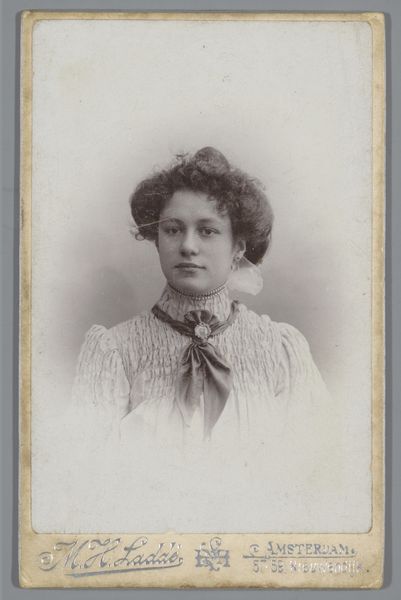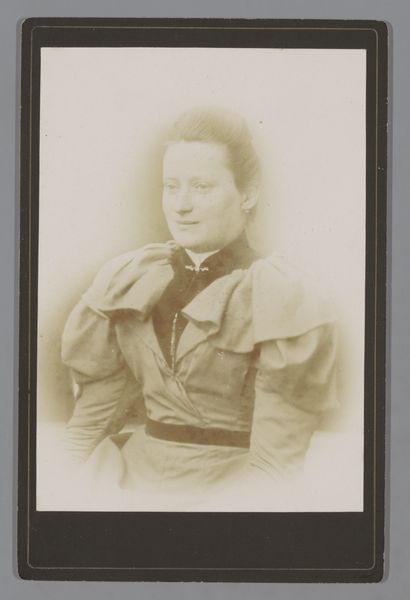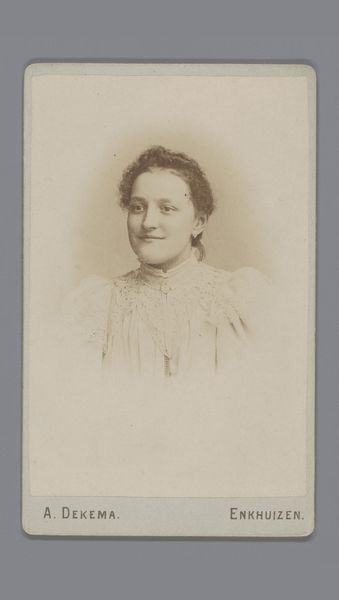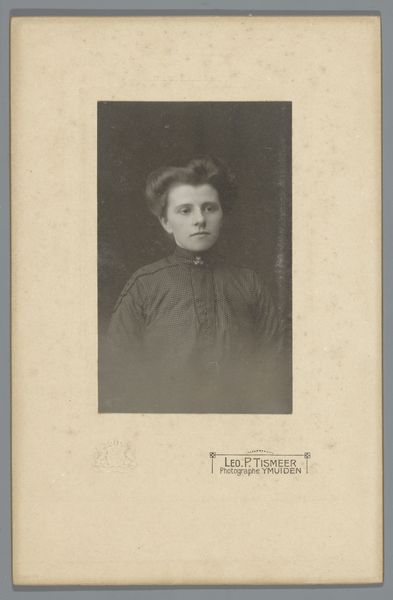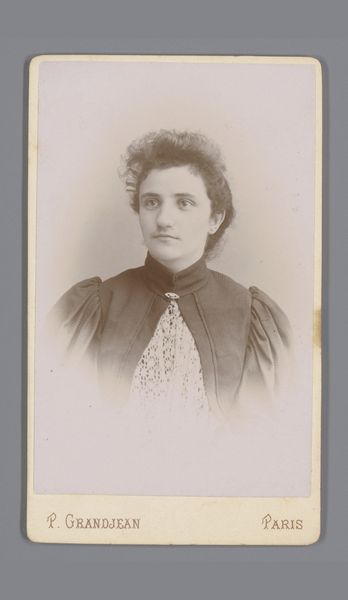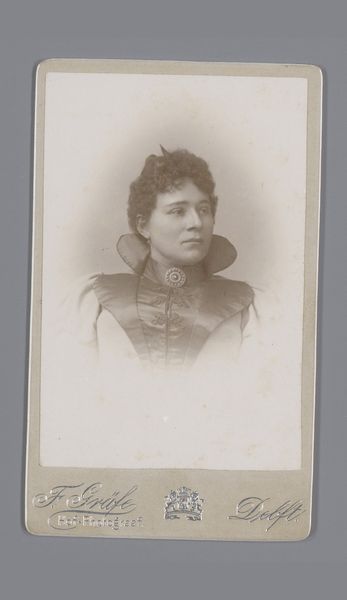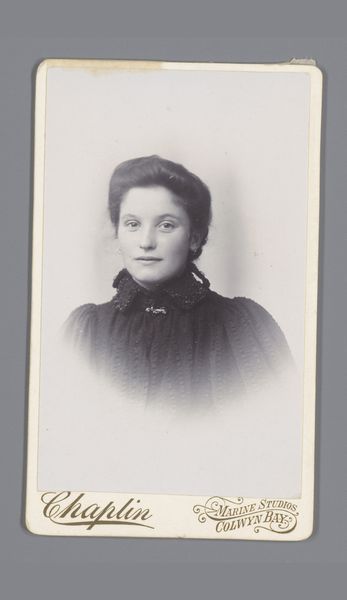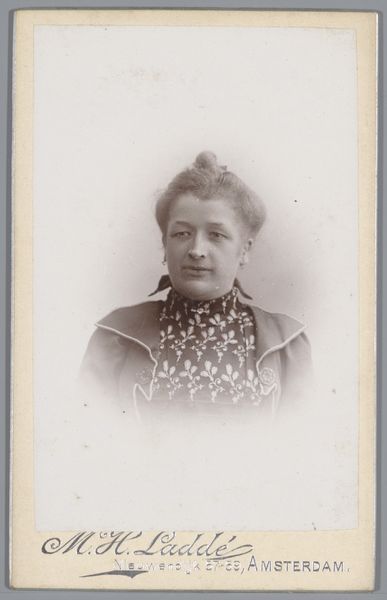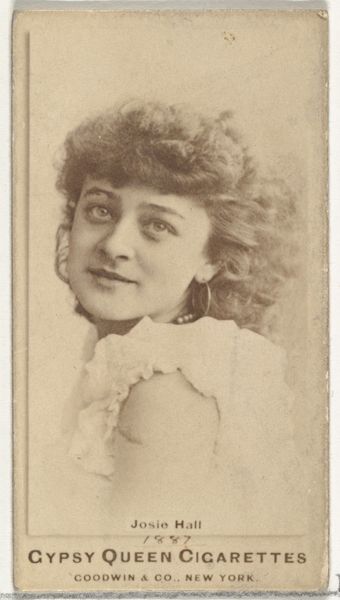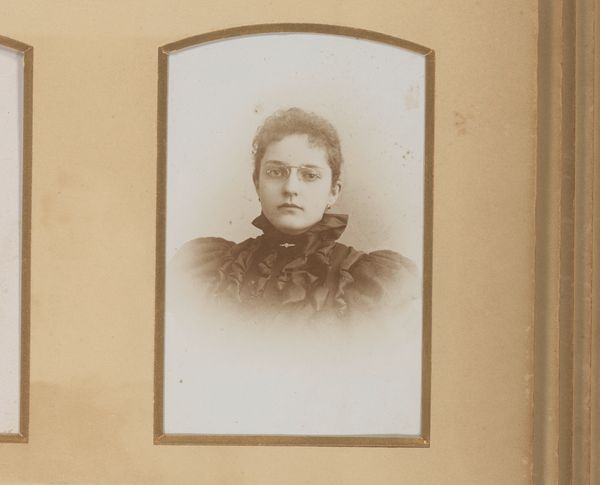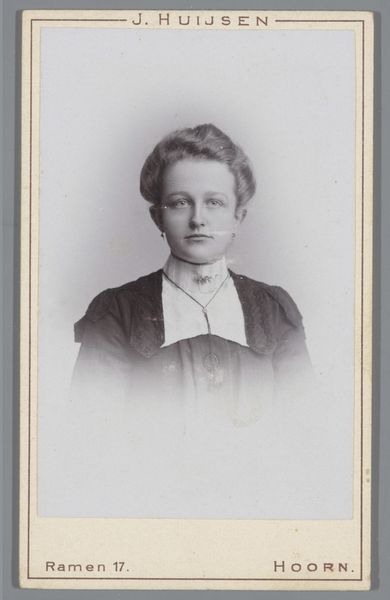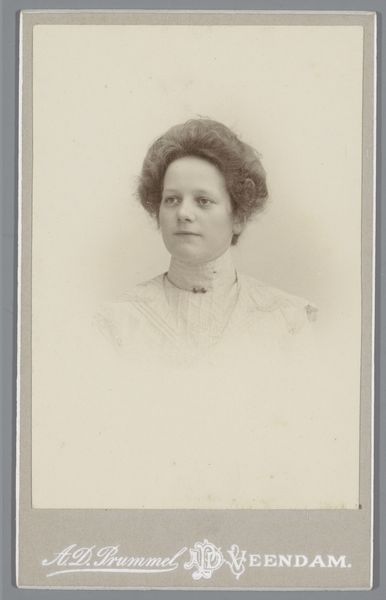
Dimensions: height 145 mm, width 101 mm
Copyright: Rijks Museum: Open Domain
Curator: Let's discuss "Portret van een onbekende vrouw" by Machiel Hendricus Laddé. This gelatin silver print, circa 1892-1906, captures the sitter in a remarkably crisp image now held at the Rijksmuseum. Editor: It strikes me first by its formal composition and soft tonal range. There’s an intriguing diffusion, almost a haze, that gives the woman an ethereal quality, defying the stiffness typical of portraits from that era. The soft light and precise shadowing makes for such beautiful forms. Curator: Indeed, the sitter's presentation tells a story. Her high-collared coat and simple ornamentation speaks of the era's strict social codes regarding dress and presentation. The absence of elaborate jewellery or overt display of wealth perhaps implies middle-class respectability. Note also the studio mark, signifying the photographer's prominence and the role of studio photography in democratizing portraiture at that time. Editor: Precisely. Laddé clearly understood the manipulation of light and the sitter's posture to create meaning. Observe the tight cropping: it focuses all the attention to her face, drawing us into an engagement with her gaze. There is no escape, you either look back or turn away. The chiaroscuro on her cheek further sculpts a certain elegance. Curator: Consider, too, how this piece interacts with photographic conventions of the period. While resembling painting traditions with its staged setup and careful lighting, photography was burgeoning. This artwork also illustrates how the rise of photography shifted power dynamics in portraiture away from traditional aristocratic and upper-class patronage toward more common clientele. Editor: This observation resonates; yet what stays with me is this image as a visual object. The play of darks and lights in the rendering of her face, along with the careful blurring, generates a mood both classic and romantic. The lack of ornamentation creates its own minimalist style, drawing one’s eyes away from possible socio-economic factors. Curator: A pertinent perspective, to be sure, although I find its social commentary equally essential. It speaks volumes regarding shifting social customs, professionalisation of photography, and modernising cultural representation during the Dutch late 19th Century. Editor: So, the debate between form and function continues! Yet, both are essential here to understanding the image’s total appeal.
Comments
No comments
Be the first to comment and join the conversation on the ultimate creative platform.
